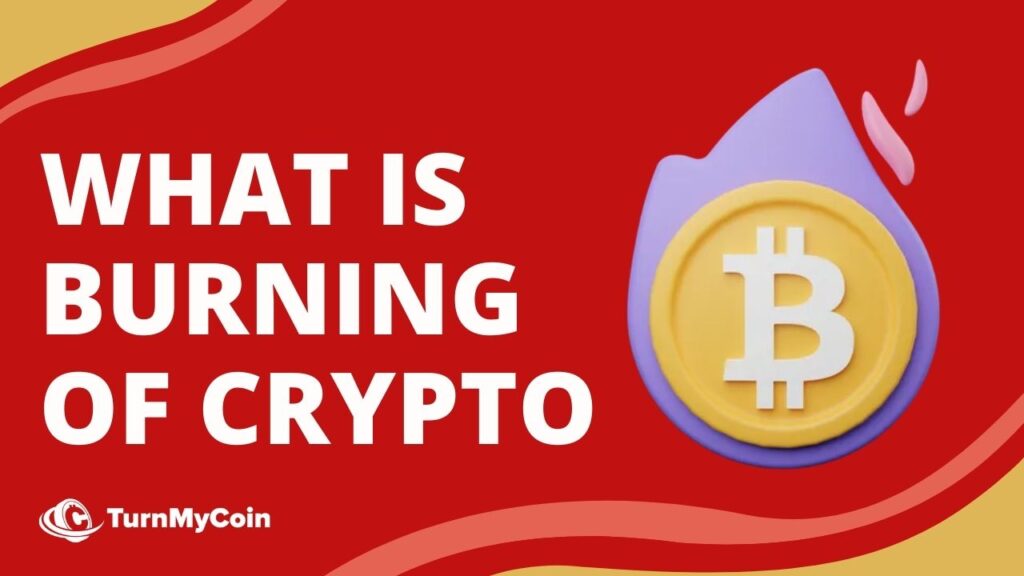Last updated on October 27th, 2023 at 06:33 am
Introduction
Burning crypto is a fairly common term in cryptocurrencies. But what is burning crypto? Let’s understand it more in this article.
The process of destroying units of a specific cryptocurrency is known as crypto burning. This action effectively removes the tokens from circulation, decreasing the total supply of that coin and potentially increasing demand.
To put it in simplest terms, Coin burning is similar to a stock buyback, where the issuing company purchases a number of shares. This in turn reduces the total number of shares available on the market.
While coin burning may potentially increase the value of a cryptocurrency there is no guarantee that this will be the case. Additionally, there may be other reasons developers choose to burn coins beyond affecting the price.
What is burning crypto mean – The Process?
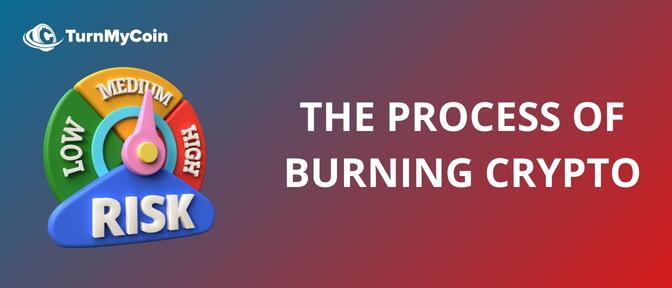
Let’s see what does burning crypto mean with respect to the process.
We have already discussed that the process of burning crypto is a simple yet effective method of reducing the total supply of a specific cryptocurrency. The process works by destroying a certain amount of coins, thereby making them inaccessible and reducing the overall supply.
This can be done through a variety of methods. For Example,
- Sending the coins to an address with no known private key or
- By hard-coding the destruction of the coins into the cryptocurrency’s protocol.
Several cryptocurrencies have implemented burning as a mechanism to control inflation and increase the value of the coin. Binance Coin (BNB) burns a certain number of coins every quarter, while Ethereum (ETH) plans to burn coins through the process of staking.
Overall, coin burning is a powerful tool for crypto communities to manage their coin’s inflationary pressure and increase demand.
5 Reasons for burning crypto
Here are 5 reasons why crypto communities may choose to burn their coins:
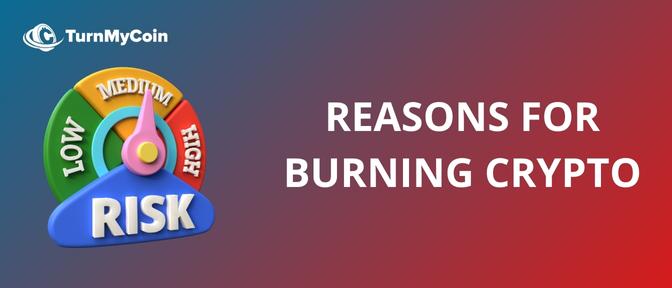
1. As a Consensus Mechanism
“In the blockchain world, Proof-of-burn (PoB) serves as a consensus mechanism that guarantees the validity of transactions on the network. It requires multiple validators to agree on the true state of the blockchain through a set of protocols.
PoB stands out as a proof-of-work system that avoids energy waste. Miners burn virtual currency tokens to earn the right to write blocks, proportional to the amount of coins they burn. They simply send these coins to a designated burner address.
This process consumes limited resources, except for the energy used to mine the coins before burning, ensuring a active and efficient network. Implementation can vary, allowing for the burning of either the native currency or an alternate chain currency such as Bitcoin, in exchange for a reward in the native currency token of the blockchain.
2. To Protect Against Spam
By requiring users to burn a small number of coins in order to make a transaction, the network can deter users from making multiple, low-value transactions that could clog the network.
2. To Increase a Coin’s Value
Another reason for burning crypto is to increase the value of a coin. By reducing the total supply of a coin, the remaining coins become scarcer and their value increases. This can be an effective way to boost the price of a coin, especially if the community can create hype around the burn event.
This is similar to a stock buyback , the company reduces the total number of shares available on the market, thereby increasing the value of the remaining shares.
3. To Keep Stablecoins Stable
>> Stablecoins, which are cryptocurrencies that are pegged to a stable asset such as the US dollar, can also benefit from burning.
By burning coins when the value of the stablecoin falls behind the value of the asset it is pegged to, the supply can be adjusted to bring the value back in line.
4. As a Sign of Long-Term Commitment
By publicly burning a significant amount of coins, the team can demonstrate that they are willing to sacrifice short-term gains for long-term success, which can help to build trust among investors and users.
5. To Promote Mining Balance
Some crypto networks centralize the act of mining new coins, allowing a few large mining pools to dominate and creating an imbalance in the ecosystem. To promote mining balance, the ecosystem can use burning crypto as a mechanism to redistribute mining rewards to small mining pools.
What are the some famous crypto burn ?
Let’s see some of the famous crypto burn-
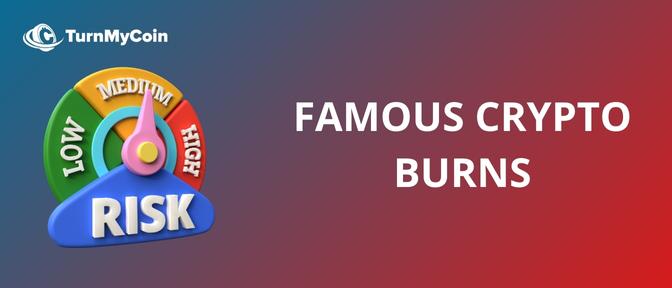
Binance
“Binance, a centralized crypto exchange, became famous for its token-burning mechanism. Since the launch of its BNB token in 2017, Binance commits to buying and burning a portion of its tokens every quarter.
At first, Binance relied on trading data from its central exchange to determine the number of BNB tokens to burn. But now, it uses the number of blocks produced on its BNB Smart Chain (BSC) as the basis. The quarterly burns will cease once the max supply reaches 100 million BNB tokens.
In addition, Binance introduced the BEP-95 upgrade in 2021, which removes a portion of BNB fees from every transaction on the BSC. Unlike the quarterly burns, Binance intends to keep this mechanism in place even after reaching the 100 million token mark.
EIP-1559
In 2021, Ethereum introduced its EIP-1559 upgrade, incorporating a new burning mechanism into its blockchain. Every gas fee on Ethereum now automatically sends a portion to a burn address.
The primary objective of EIP-1559 was to enhance the user experience by making transactions more convenient. The Ethereum developers achieved this by creating a division between the “base fee” and the “miner tip.” The base fee serves as the minimum gas required to submit a transaction, while the miner tip motivates validators to speed up the confirmation process.
Under this new model, the base fee disappears from circulation once a transaction clears, and miners receive only the miner tip as their reward. Furthermore, EIP-1559 adjusts the block size based on transaction volume, automatically adjusting the base fee. If network activity rises, the base fee increases, and vice versa. This sophisticated system replaces Ethereum’s previous first-price auction model, which favored high-paying users.
EIP-1559 may also have significant implications for Ether’s future supply. If network activity grows, ETH’s burn rate could potentially surpass its daily issuance. Some Ethereum supporters believe that ETH could become a deflationary asset in the future.
Can Bitcoin be burned?
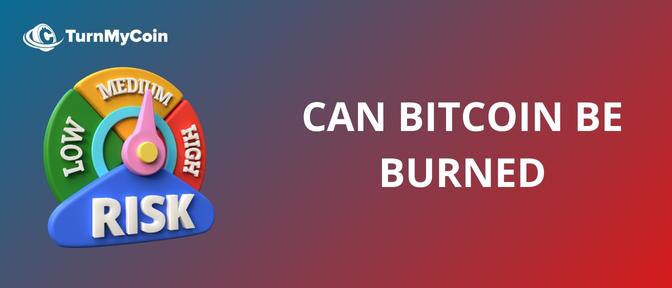
Burning cryptocurrencies doesn’t require a built-in mechanism. Take Bitcoin for instance – even though it doesn’t have an automated burning schedule, people can still burn it by sending their coins to a burn address. Unfortunately, there have been instances where people accidentally burned their bitcoins after losing access to their wallets due to lost private keys. One well-known case is of James Howells who threw away a hardware device containing 8,000 BTC in 2013, which he can’t recover now.
However, this doesn’t make Bitcoin a deflationary cryptocurrency as its supply will continue to increase until it reaches 21 million, with new coins being mined and added to circulation each day. But, with a halving event happening every four years, the rate of daily issuance decreases, making Bitcoin technically inflationary until it reaches its max supply in 2140. To avoid accidentally burning their Bitcoin holdings, crypto investors must take extra precautions like writing down their private keys on multiple pieces of paper and storing them securely. It’s also wise to include private key information in legal documents, such as a will, to ensure the cryptocurrency remains accessible.
What does burning crypto mean- Advantages of burning crypto?
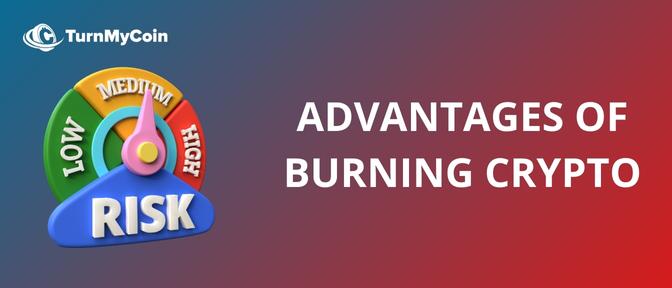
Here are three key advantages of burning crypto:
- Potential for Increased Demand and Price Appreciation: We have already discussed this in detail above. One of the main advantages of burning crypto is the potential for increased demand and price appreciation.
- Incentivizing Holding Rather Than Selling: Burning crypto can also serve as a way to incentivize holders to hold onto their coins rather than selling them. By reducing the total supply of a coin, holders may believe that the coin’s value will increase in the future, and may choose to hold onto their coins rather than selling them.
This can help to stabilise the coin’s price and increase investor confidence. - Aligning the Interests of Holders and the Development Team: Burning crypto can also help to align the interests of holders and the development team.
By reducing the total supply of a coin, the development team can signal their long-term commitment to the project and demonstrate that they are willing to sacrifice short-term gains for long-term success. This can help to build trust among holders, who may then be more willing to hold onto their coins, knowing that the development team has a vested interest in the coin’s success.
Disadvantages of burning crypto

After good information about What is burning crypto, let us understand its disadvantages. While burning crypto has several advantages, it also has certain disadvantages that should be considered. Here are three key disadvantages of burning crypto:
- Potential for Reduced Liquidity: One of the main disadvantages of burning crypto is the potential for reduced liquidity. By destroying a certain amount of coins, the total supply of a coin is reduced, which can make it harder for holders to buy or sell the coin.
This can make the coin less attractive to potential investors and traders, which can lead to reduced liquidity and a corresponding decrease in value. - Dependence on External Factors for Success: Burning crypto can also be dependent on external factors for success. For example, if the crypto market is in a bearish phase, burning crypto may not have much impact on the coin’s price.
- The Possibility of Negative Effects on the Utility of a Cryptocurrency: Burning crypto can also have negative effects on the utility of a cryptocurrency. By reducing the total supply of a coin, the coin may become less accessible to users, which can negatively impact the coin’s overall utility. Burning coins can cause the price to increase for end users, potentially discouraging their use of the coin.
Conclusion
Burning of Crypto can be a powerful tool for crypto communities to manage their coins. I will be helpful in inflationary pressure, increase demand, and signal their commitment to the project’s success.
However, it also has its drawbacks, such as reduced liquidity, dependence on external factors for success, and the possibility of negative effects on the utility of a cryptocurrency.
It is important to understand the specific purpose and potential consequences of burning for a given cryptocurrency, before deciding to burn coins.
The decision to burn crypto should be based on a thorough analysis of the coin’s current market conditions, the community’s sentiment, and the project’s long-term goals.
Additionally, it is important to consider the drawbacks of burning crypto and weigh them against the potential advantages before deciding to burn coins.
